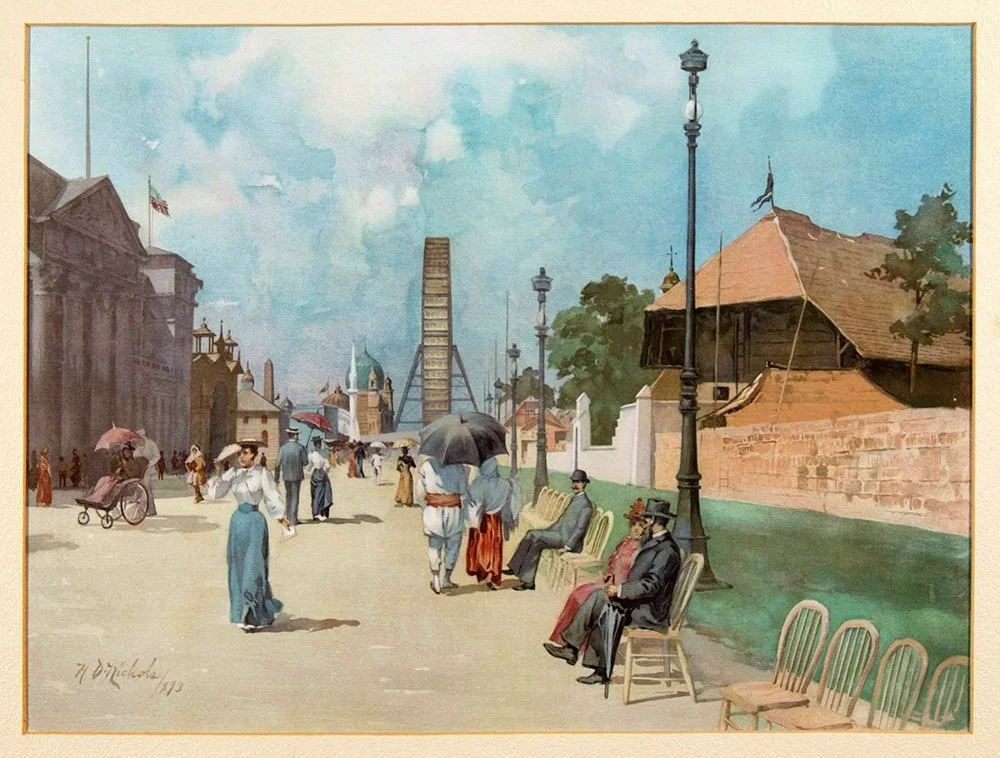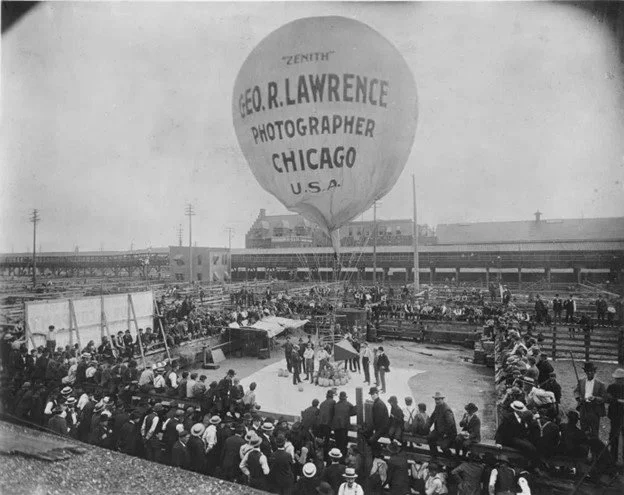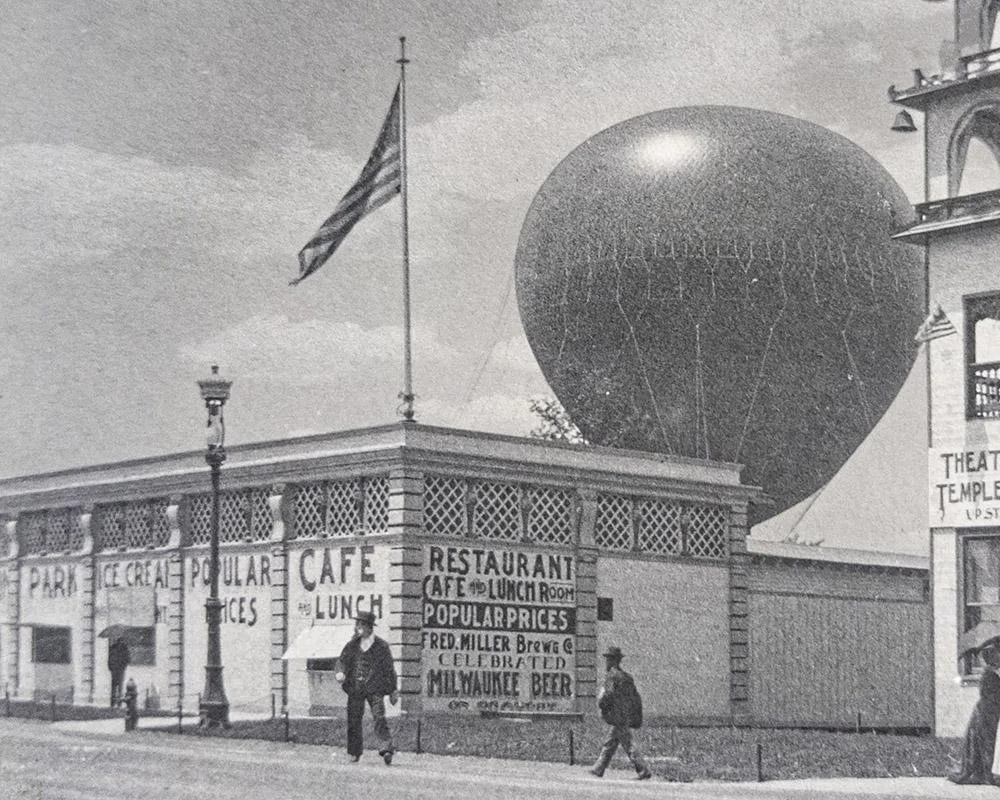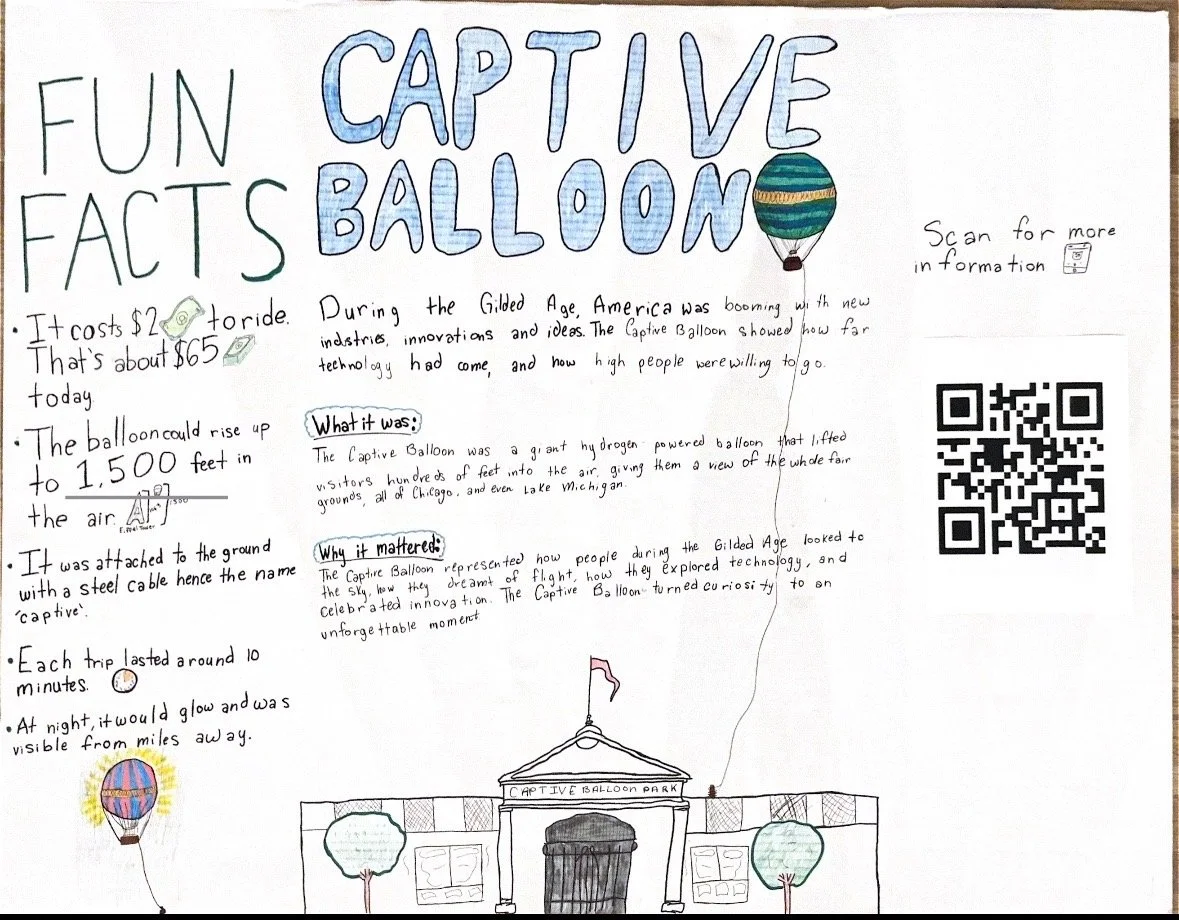
Captive Balloon
Want a chance to experience a once in a lifetime opportunity for yourself?

What is a Captive Balloon?
A captive hot air balloon is not a traditional hot air balloon due to its use of hydrogen rather than air. It is filled with roughly 100,000 cubic feet of heated hydrogen. The balloon itself is made of heat resistant fabric allowing it to sustain the heated hydrogen. Attached to the balloon is a tether that controls the height in which it is able to go. Dangling from the bottom of the balloon is a basket for passengers to ride in, making it an enjoyable attraction. Between this basket and the balloon sits a burner that heats up the hydrogen, which allows it to float in the air.
Captive Balloon in the Gilded Age
The captive balloon at the 1893 Columbian World’s Exposition was the first of its kind to be displayed, representing the Gilded Age concepts of innovation and progress. Its new and innovative technology allowed visitors to see the fair from above. The display managed to encapsulate the era’s fascination with new technology. It included the use of advanced materials:
Heated hydrogen
A large balloon used for a form of transportation relying on floating
A basket that holds people to be transported in the air
This exemplified newly seen engineering because of the concept of traveling in an object powered by fire-heated gas that allowed it to float. It was also the first time that a vehicle did not have exhaust, as the gas was kept in an enclosed balloon.
Making of the Captive Balloon
The captive balloon was invented in 1783 by the Montgolfier Brothers in France. They were inspired by the concept of flight, which seemed to be out of reach. The Montgolfier Brothers came to invent the captive balloon through the discovery that hot air is lighter than cool air.
The first captive balloon took flight on June 4, 1783, which went over a mile high before fire burned the basket. For months, prototypes were tested with:
Sheep
Ducks
Roosters
These animals were named the official first passengers of the captive balloon.
The first flight with a human passenger took place on September 19, 1783 and the flight lasted roughly 25 minutes.
Through their work in aviation, the Montgolfier Brothers inspired future aviator engineers to devote their lives to creating inventions and innovations in flight.

Exhibit at the 1893 Columbian World’s Exposition
The captive balloon, here, at the Columbian World’s Exposition allows for extraordinary and futuristic views of the fairgrounds from the air. It is an experience like no other that has never been seen before. It carries passengers up to 1,000 feet in the air. Our balloon is tethered to the ground by a rope and reeled in during storms to ensure extreme caution and prestigious safety of our passengers. It takes numerous trips each day, including up to 35 trips in just one afternoon! This allows every fair attendee to be able to have their turn on the captive balloon attraction.
Flight Schedule and Times
Tickets currently SOLD OUT!
Buy your ticket now
Warning!!
Exhibit operation depends on weather condition
No Refunds!




